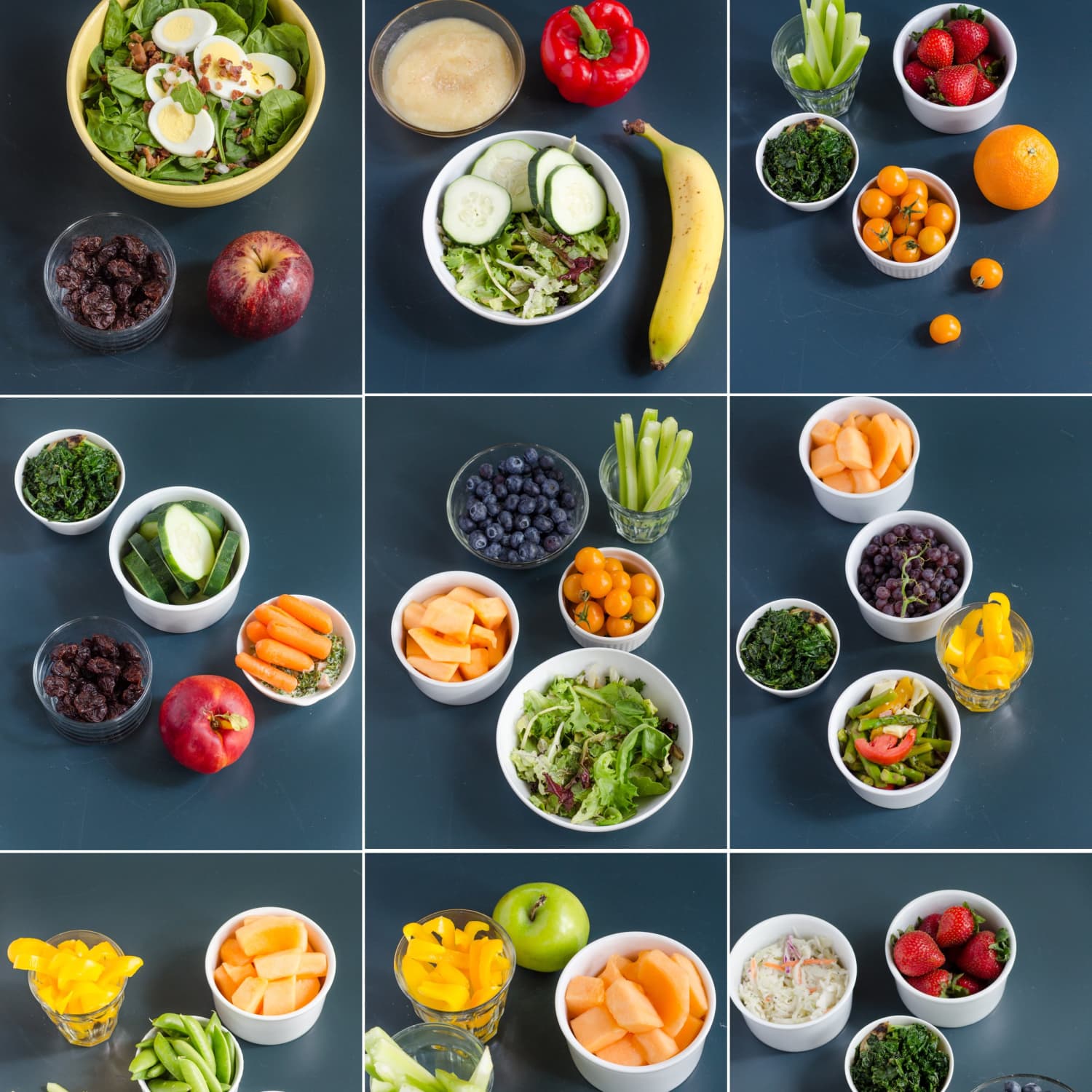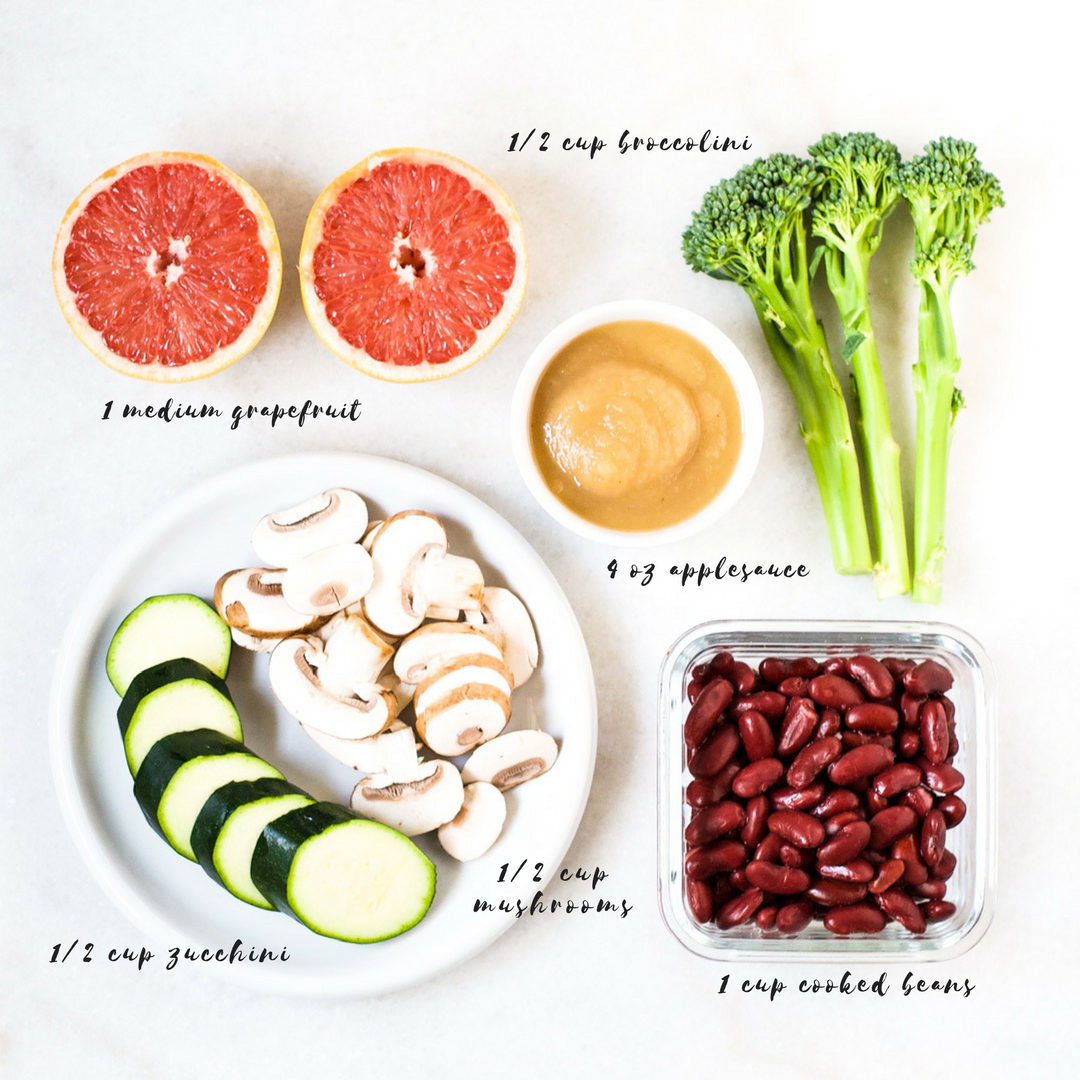
Eating a balanced diet that includes plenty of fruit and vegetables is essential for maintaining good health. But just how much should you be aiming to consume each day? This article will provide you with all the information you need to ensure you’re getting the right amount of fruits and vegetables to keep your body functioning at its best. From recommended serving sizes to creative ways to incorporate more produce into your meals, this article is here to help make healthy eating a breeze.
This image is property of cdn.apartmenttherapy.info.
Benefits of Eating Fruit and Vegetables
Eating a diet rich in fruits and vegetables offers a multitude of benefits for your overall health and well-being. These colorful and nutritious foods are not only delicious but also packed with essential nutrients that your body needs to function properly. Incorporating fruits and vegetables into your daily diet can contribute to a healthier lifestyle and reduce the risk of chronic diseases.
Rich in Essential Nutrients
Fruits and vegetables are powerhouses of essential nutrients, including vitamins, minerals, and antioxidants. They provide a wide range of vitamins such as vitamin C, vitamin A, vitamin K, and various B vitamins. These vitamins play a vital role in maintaining healthy skin, boosting the immune system, promoting proper eye health, and supporting the overall functioning of the body.
Additionally, fruits and vegetables are abundant sources of minerals like potassium, magnesium, and folate. Potassium is crucial for maintaining proper blood pressure levels and a healthy heart, while magnesium is essential for bone health and the proper functioning of various enzymatic reactions in the body. Folate is particularly important for pregnant women as it aids in the development of the baby’s neural tube.
Good Source of Dietary Fiber
One of the key benefits of incorporating fruits and vegetables into your diet is their high dietary fiber content. Fiber is a type of carbohydrate that cannot be digested by the body, but it plays a crucial role in maintaining a healthy digestive system. It adds bulk to the stool, promotes regular bowel movements, and helps prevent constipation.
By including a variety of fruits and vegetables in your meals, you can ensure an adequate intake of dietary fiber. This can also help you feel fuller for longer, which is beneficial for weight management and preventing overeating.
Promote Good Digestion
The high fiber content found in fruits and vegetables not only aids in preventing constipation, but it also promotes good digestion overall. Fiber acts as a natural cleanser for the digestive tract, helping to keep it healthy and functioning optimally.
Moreover, fruits and vegetables contain enzymes and phytochemicals that can support the production of digestive juices, aiding in the breakdown and absorption of nutrients from the foods you consume. They also contain water, which promotes hydration and helps soften the stool for easier passage.
Boost Immune System
A strong immune system is essential for fighting off infections and diseases. Fruits and vegetables play a significant role in boosting your immune system due to their high content of essential vitamins and antioxidants.
Vitamin C, found abundantly in citrus fruits such as oranges and strawberries, is well-known for its immune-boosting properties. It helps stimulate the production of white blood cells, which are vital for fighting off infections. Other antioxidants like beta-carotene found in carrots and spinach, as well as vitamin E present in nuts, seeds, and avocado, also contribute to a healthy immune system.
Reduce the Risk of Chronic Diseases
Including a variety of fruits and vegetables in your daily diet can significantly reduce the risk of chronic diseases. Research has consistently shown that a diet rich in fruits and vegetables is associated with a lower risk of heart disease, stroke, high blood pressure, certain cancers, and type 2 diabetes.
The bioactive compounds found in fruits and vegetables, such as flavonoids and carotenoids, have been linked to their protective effects against chronic diseases. These compounds act as antioxidants, helping to neutralize harmful free radicals in the body and reduce inflammation, which is a common underlying factor in many chronic diseases.
Recommended Daily Intake
Now that we understand the numerous benefits of consuming fruits and vegetables, it’s important to know how much we should be incorporating into our diets for optimal health. The recommended daily intake varies depending on various factors, including age, gender, activity level, and specific health conditions. Let’s explore the general guidelines and recommendations for different groups.
General Guidelines
The general guideline for a healthy diet is to aim for at least five servings of fruits and vegetables per day. However, recent recommendations suggest that this should be increased to seven to nine servings per day for optimal health benefits. A serving size can vary depending on the fruit or vegetable, but as a general rule of thumb, one serving is typically equivalent to a medium-sized piece of fruit or half a cup of chopped vegetables.
It’s important to note that this recommendation is a minimum, and consuming more servings of fruits and vegetables can provide even greater health benefits.
For Adults
For adults, the recommended daily intake of fruits and vegetables follows a similar guideline of at least five servings per day. However, it’s beneficial to aim for closer to nine servings to maximize health benefits. This can be achieved by incorporating fruits and vegetables into meals, snacks, and smoothies throughout the day.
For Children
Children also greatly benefit from a diet rich in fruits and vegetables. The general recommendation for children is to aim for five servings per day, but this can vary depending on their age and calorie needs. As children have smaller appetites, it’s important to focus on nutrient-dense options and ensure a variety of fruits and vegetables are included in their meals and snacks.
For Pregnant Women
Pregnant women have increased nutritional needs to support the growth and development of their baby. It is recommended for pregnant women to consume a minimum of seven servings of fruits and vegetables per day, but again, aiming for closer to nine servings can provide additional benefits. Adequate folate intake is particularly important during pregnancy, so incorporating folate-rich vegetables such as leafy greens and broccoli is essential.
For Elderly Individuals
As we age, our nutritional needs may change. Elderly individuals should aim for a minimum of five servings of fruits and vegetables per day, but again, increasing this intake to nine servings can be highly beneficial for overall health and well-being. Including a variety of fruits and vegetables can help meet nutrient needs and support healthy aging.
Factors to Consider
In addition to the general guidelines for fruit and vegetable intake, there are several factors to consider when determining the optimal amount for your specific needs. These factors include age, gender, activity level, health conditions, and weight goals.
Age and Gender
Age and gender can influence the recommended daily intake of fruits and vegetables. Children and teenagers have different nutrient needs compared to adults, and specific vegetables such as legumes and leafy greens may be particularly important for postmenopausal women due to their high calcium and iron content.
Activity Level
Those who engage in regular physical activity may have higher calorie and nutrient needs, including an increased need for fruits and vegetables. Active individuals should aim to incorporate a larger quantity of fruits and vegetables into their diet to support energy levels and recovery.
Health Conditions
Certain health conditions such as diabetes or kidney disease may require modifications in fruit and vegetable intake. It’s important to consult with a healthcare professional or registered dietitian if you have any specific health concerns or conditions that could affect your fruit and vegetable consumption.
Weight Goals
If you’re trying to lose weight or maintain a healthy weight, fruits and vegetables can play a vital role in your journey. Due to their high water and fiber content, they can help you feel full and satisfied with fewer calories. Including a variety of colorful fruits and vegetables in your meals can add volume and nutrients to your plate without adding excessive calories.
What Counts as a Serving?
Understanding serving sizes is important when gauging your fruit and vegetable intake. Here’s a breakdown of what counts as a serving for both fruits and vegetables:
Fruits
- 1 medium-sized fruit (e.g., apple, banana, orange)
- 1 small fruit (e.g., kiwi, plum)
- 1 cup of berries or grapes
- 1/2 cup of chopped or canned fruit
- 1/4 cup of dried fruit (should be eaten in moderation due to their higher sugar content)
Vegetables
- 1/2 cup of cooked vegetables
- 1 cup of leafy greens
- 1/2 cup of raw or chopped vegetables
- 1/2 cup of vegetable juice (should be consumed in moderation due to its lower fiber content)
Remember, these serving sizes are general guidelines and can vary depending on the fruit or vegetable, so it’s important to be mindful of portion sizes while ensuring a variety of fruits and vegetables are included in your meals.
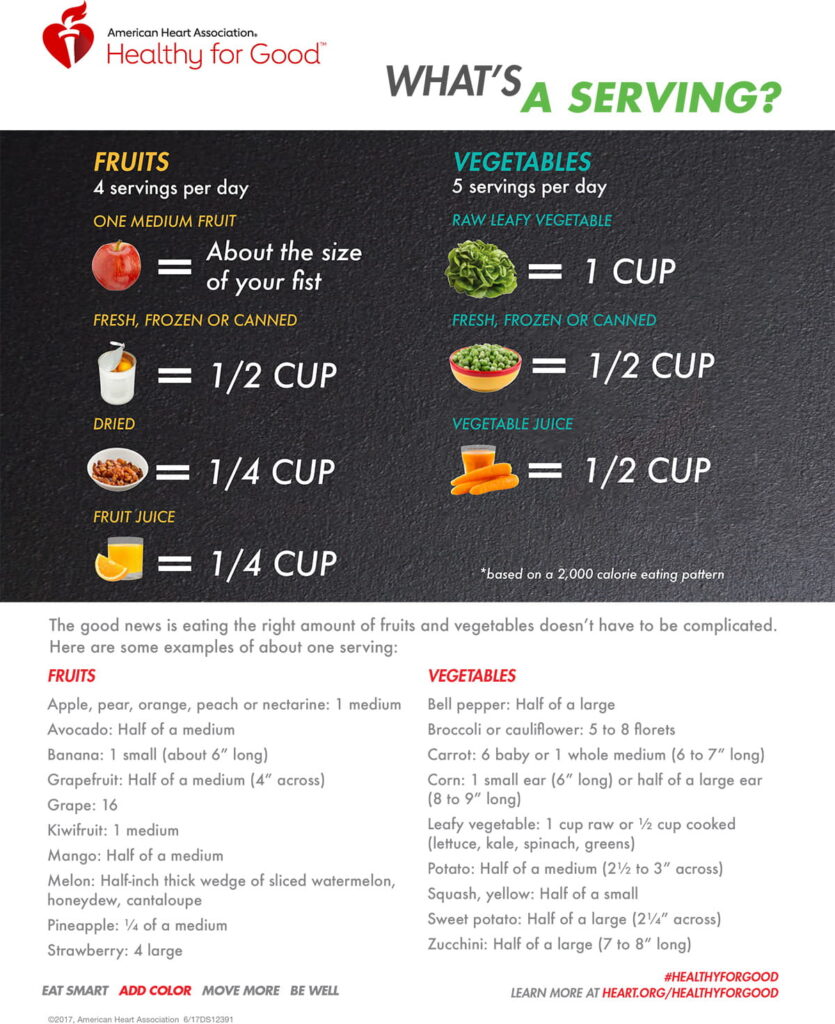
This image is property of www.heart.org.
Tips to Incorporate More Fruits and Vegetables
Incorporating more fruits and vegetables into your daily routine doesn’t have to be overwhelming. Here are some practical tips to help you increase your intake and enjoy the benefits of these nutritious foods:
Variety is Key
Aim to incorporate a wide variety of fruits and vegetables in your diet. Different colors represent different nutrients, so mixing it up can ensure you’re getting a broad range of essential vitamins and minerals. From vibrant greens such as broccoli and kale to the rich purples of berries and reds of tomatoes, an array of colors will not only make your meals visually appealing but also enhance the nutritional value.
Incorporate into Every Meal
Make fruits and vegetables a staple in every meal. Add a handful of spinach or sliced bell peppers to your omelet in the morning, top your salads with a rainbow of vegetables, and include a side of roasted or steamed vegetables with your lunch and dinner. By incorporating them into every meal, you can easily reach your recommended daily intake.
Snack Smart
Instead of reaching for processed snacks, opt for fruits and vegetables as a healthy and nutritious snack option. Keep a bowl of fresh fruit on your kitchen counter or pack pre-cut veggies and hummus for an on-the-go snack. This way, you’ll have easy access to wholesome options and will be less likely to reach for unhealthy alternatives.
Get Creative
Experiment with different cooking methods and recipes to add variety and excitement to your fruit and vegetable intake. Try grilling fruits like peaches or pineapple for a delicious and healthy dessert, blend vegetables into smoothies, or make zucchini noodles as a low-carb alternative to pasta. The possibilities are endless, and by getting creative, you’ll discover new flavors and textures that make fruits and vegetables more enjoyable than ever.
Plan Ahead
Planning your meals and snacks in advance can help ensure you have a sufficient supply of fruits and vegetables on hand. Make a weekly grocery list that includes a variety of produce, and prep your fruits and veggies for the week ahead. This can include washing, chopping, and portioning them into containers, making it easier to grab them for a quick and nutritious snack or incorporate them into meals.
Common Misconceptions
There are several misconceptions surrounding fruits and vegetables that can sometimes lead to confusion. Let’s address some of these misconceptions and provide clarity:
Fruit Juice vs. Whole Fruit
It’s important to note the difference between fruit juices and whole fruits. While fruit juices can provide some vitamins and minerals, they are typically lower in fiber and higher in sugar compared to whole fruits. Consuming whole fruits is preferred over fruit juices as they provide the added benefits of dietary fiber, which aids in digestion and helps to keep you fuller for longer.
Organic vs. Conventional Produce
Organic produce has gained popularity in recent years, with many people believing it to be a healthier option. While organic produce is grown without synthetic pesticides and fertilizers, studies have shown that the nutrient content of organic and conventional produce is relatively similar. Both organic and conventional fruits and vegetables can contribute to a healthy diet, so it’s essential to prioritize fresh produce regardless of its organic status.
Frozen vs. Fresh Produce
Fresh produce is often considered the optimal choice, but frozen fruits and vegetables can be just as nutritious. In fact, frozen produce is often flash-frozen at peak ripeness, preserving their essential nutrients. This can sometimes make frozen options more nutrient-dense than fresh produce that has been sitting on the shelf for a longer period. If fresh produce is not readily available or in season, don’t hesitate to turn to frozen alternatives, as they can still provide you with the same health benefits.
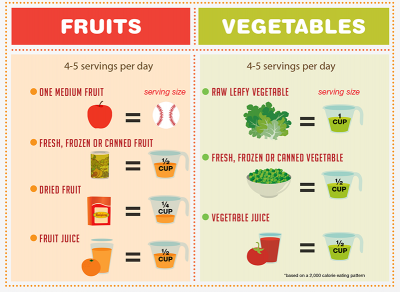
This image is property of riseandshine.childrensnational.org.
Overconsumption and Potential Risks
While fruits and vegetables offer numerous health benefits, it’s important to be mindful of potential risks associated with overconsumption or specific circumstances. Here are some important considerations:
High Sugar Intake
Some fruits, especially tropical fruits like mangoes and pineapples, are naturally higher in sugar content compared to others. While these fruits still provide essential nutrients, it’s important to moderate your intake if you have diabetes or are trying to manage your blood sugar levels. Opt for lower-sugar fruits such as berries and apples, and balance your overall sugar intake by eating a variety of fruits and vegetables.
Allergies or Sensitivities
Individuals with known allergies or sensitivities to specific fruits or vegetables should avoid consuming them to prevent adverse reactions. If you experience any symptoms such as itching, swelling, or difficulty breathing after consuming certain fruits or vegetables, it’s important to consult with a healthcare professional to determine the specific allergen and take necessary precautions.
Pesticide Exposure
While fruits and vegetables are an important part of a healthy diet, conventionally grown produce may have traces of pesticides. It’s important to wash all fruits and vegetables thoroughly before consuming to minimize potential exposure. Additionally, choosing organic produce can reduce exposure to certain pesticides, but it’s essential to prioritize fresh fruits and vegetables in your diet regardless of their organic status.
Effects of Cooking and Processing
The way fruits and vegetables are cooked and processed can impact their nutrient content. Here are some key considerations:
Loss of Nutrients
Cooking fruits and vegetables can cause some nutrient loss, particularly heat-sensitive vitamins like vitamin C. However, cooking methods such as steaming, baking, or stir-frying can help retain more nutrients compared to boiling. To preserve the maximum nutritional value, aim for minimal cooking time and avoid overcooking.
Enhanced Nutrient Absorption
On the flip side, some nutrients are actually enhanced through cooking or processing. For example, lycopene, a potent antioxidant found in tomatoes, becomes more bioavailable when tomatoes are cooked. Similarly, cooking certain vegetables like carrots and spinach can increase the release of beneficial antioxidants and make their nutrients more easily absorbed by the body.
Potential Food Safety Concerns
It’s important to handle and store fruits and vegetables properly to minimize the risk of foodborne illnesses. Always wash fruits and vegetables thoroughly before consuming them to remove any potential contaminants. Additionally, store them at appropriate temperatures to prevent spoilage and reduce the risk of foodborne pathogens.
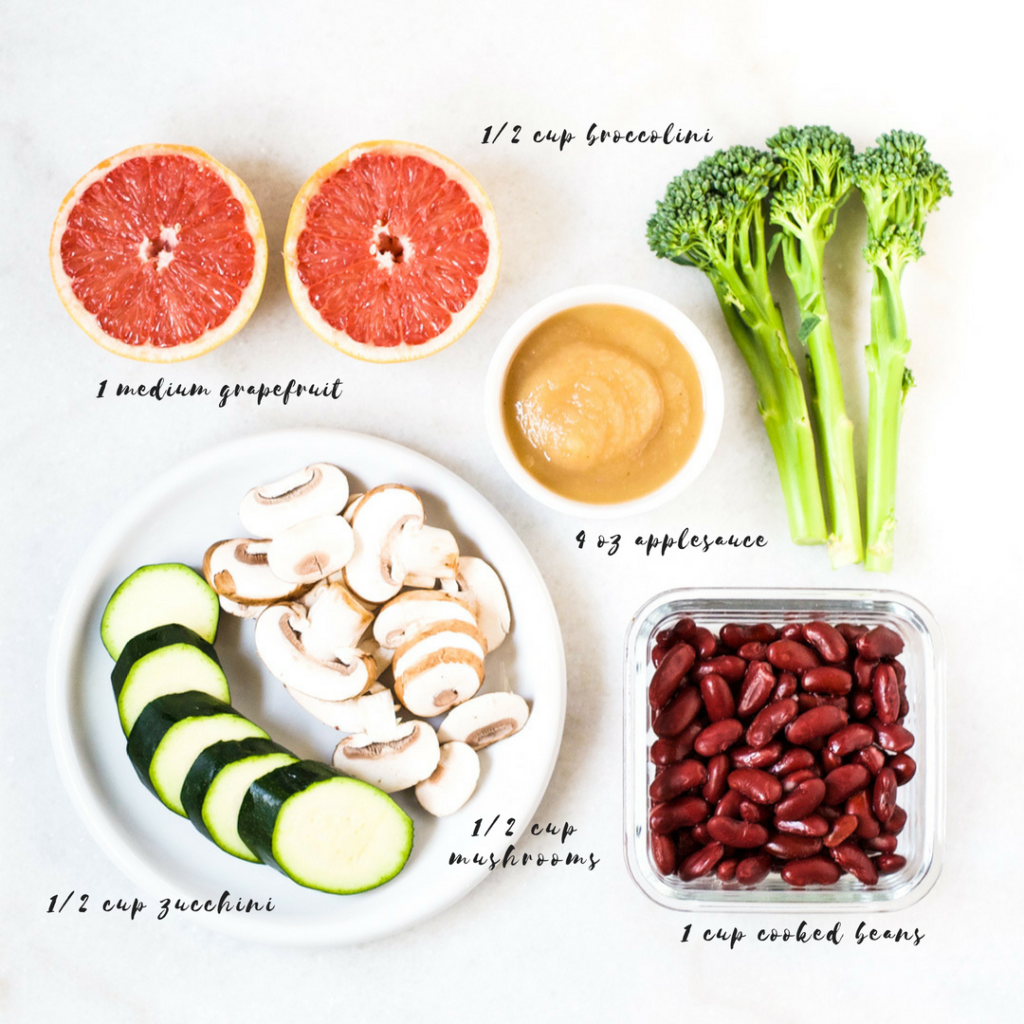
This image is property of images.squarespace-cdn.com.
Conclusion
Incorporating a variety of fruits and vegetables into your daily diet is an excellent way to support your overall health and well-being. These nutrient-dense foods provide essential vitamins, minerals, and antioxidants, contribute to good digestion, boost the immune system, and reduce the risk of chronic diseases. By following the recommended daily intake, considering individual factors, and incorporating fruits and vegetables into every meal, you can enjoy the numerous benefits they offer. Remember to be creative, plan ahead, and strive for a balanced diet that includes an array of colorful produce. So go ahead, fill your plate with nature’s vibrant bounty, and reap the rewards of a wholesome diet.
